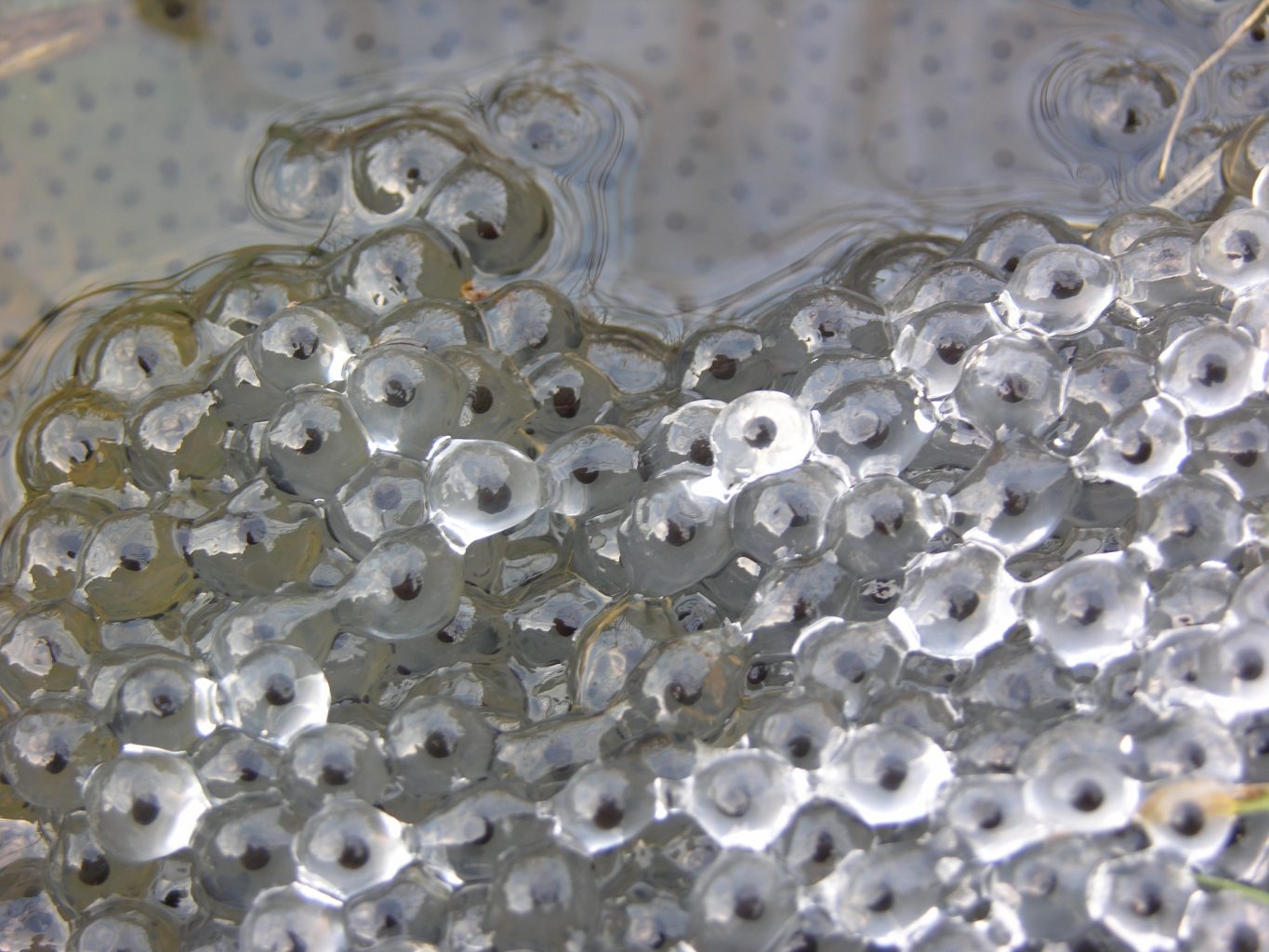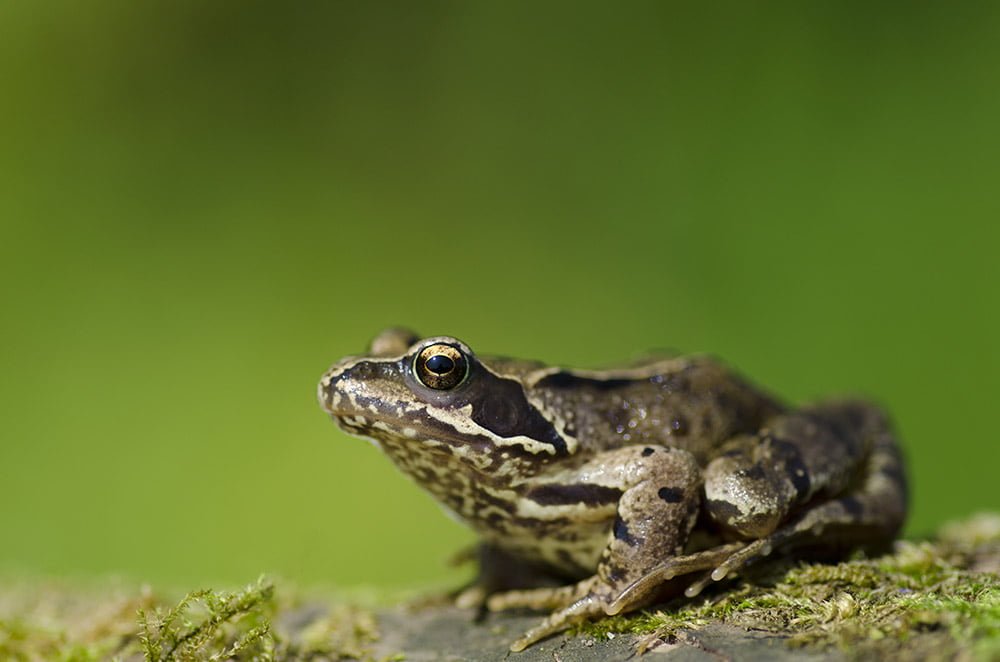Found throughout England, Wales, and Ireland with sparse populations located in parts of Scotland, the Common frog inhabits any suitably damp location throughout the summer and returns annually to ponds for breeding. They are similar in appearance and life history to the Common toad and both species may be found to share breeding ponds.
Overview
A frog’s feeding habits vary throughout different periods of their lifecycle. As tadpoles they are herbivorous meaning that they feed on vegetation including leaf litter and algae, as young frogs they will feed on invertebrates both in the water and on land. Adults feed mostly on land, hunting at night when they feed on invertebrates including garden pests such as slugs, snails and an assortment of insects. They go without eating during the breeding period which usually lasts a couple of weeks.
Common frogs will hibernate in the coldest months but for less time than most other amphibians. They are able to breathe through their skin, which allows them to hibernate in water, in thick wet mud and under piles of damp decaying leaves. They emerge usually in January and begin to lay spawn, occasionally as early as late February but more commonly in March. Adult Common frogs congregate in shallow pools and garden ponds for breeding, the males display through a series of croaks throughout the day to win the approval of the females. Laying then takes place at night with each female producing a single cluster of up to 2000 eggs.
It is possible to calculate the amount of females breeding in a pond by counting the number of separate egg clusters. The tadpoles eat their way out of the protective egg casing after about 20 days. For the first five weeks of life they feed mainly on algae and plant foliage, until they develop small teeth. They then begin to prey on other smaller tadpoles and various water dwelling insects. It takes about 14 weeks in Britain for tadpoles to grow into froglets and begin leaving the confines of their birth pool for the first time.
Identification
The adult Common frog is usually olive green with various randomly placed dark spots, stripes and patches on the back. Darker and brighter versions have occasionally been recorded including individuals in shades of brown, orange, red and even pink. Notable markings include a brown patch behind the eye and parallel brown or black stripes on the back legs. Common frogs have two ridges running along each side of their back and these are typically lighter in colour than the rest of the body. They are slightly smaller than Common toads and their skin appears smoother.
Males and females are very similar in appearance; during the mating season the male’s throat often turns white which can be used as determining characteristic. A more subtle feature is a small solid lump on the male’s first finger called the nuptial pad which he uses to grip the female during the mating process. In large ponds where many breeding individuals congregate the males display to the females by changing the colour of their skin to a pale shade of grey.
The frogs spawn, which most people will recognise, is laid in large clusters from late February through to March, weather dependent. The transparent eggs float so allow a good view of the developing tadpoles. When hatched Common Frog tadpoles have slight golden or brown dots along their bodies, the tadpoles of Common toads are totally black.

In The Garden
The Common frog requires damp and shaded habitats to hide in throughout the warmer months of the year as their skin needs to be constantly moist. They will often stray relatively long distances from ponds outside of the breeding season, contrary to assumptions that they depend on water all year round. It is not, therefore, essential to have a pond in your garden, although it will help as it is in water where they are most visibly active and where the young spend their larval stage.
The breeding season is probably the best time to observe them as the males congregate noisily to attract a mate. Throughout the rest of the year they will live unobtrusively in shaded corners, long grass, under sheds, plant pots and log piles, quietly and nocturnally going about their business of keeping the slugs and snails at bay.
It is beneficial to refrain from being overly tidy in the garden: small leaf piles, stacks of damp and decaying wood and patches of un-mown grass will all provide a suitable habitat for the Common frog.
Did you know?
- Adult Common frogs will commonly return to the pond of their birth to commence the breeding period; they achieve this through recognising and following scent trails.
- It is estimated that as little as 1-2% of the eggs laid by the female survive to emerge from the pond. If lucky enough to reach this stage, frogs can continue to live to 7 or 8 years old.
